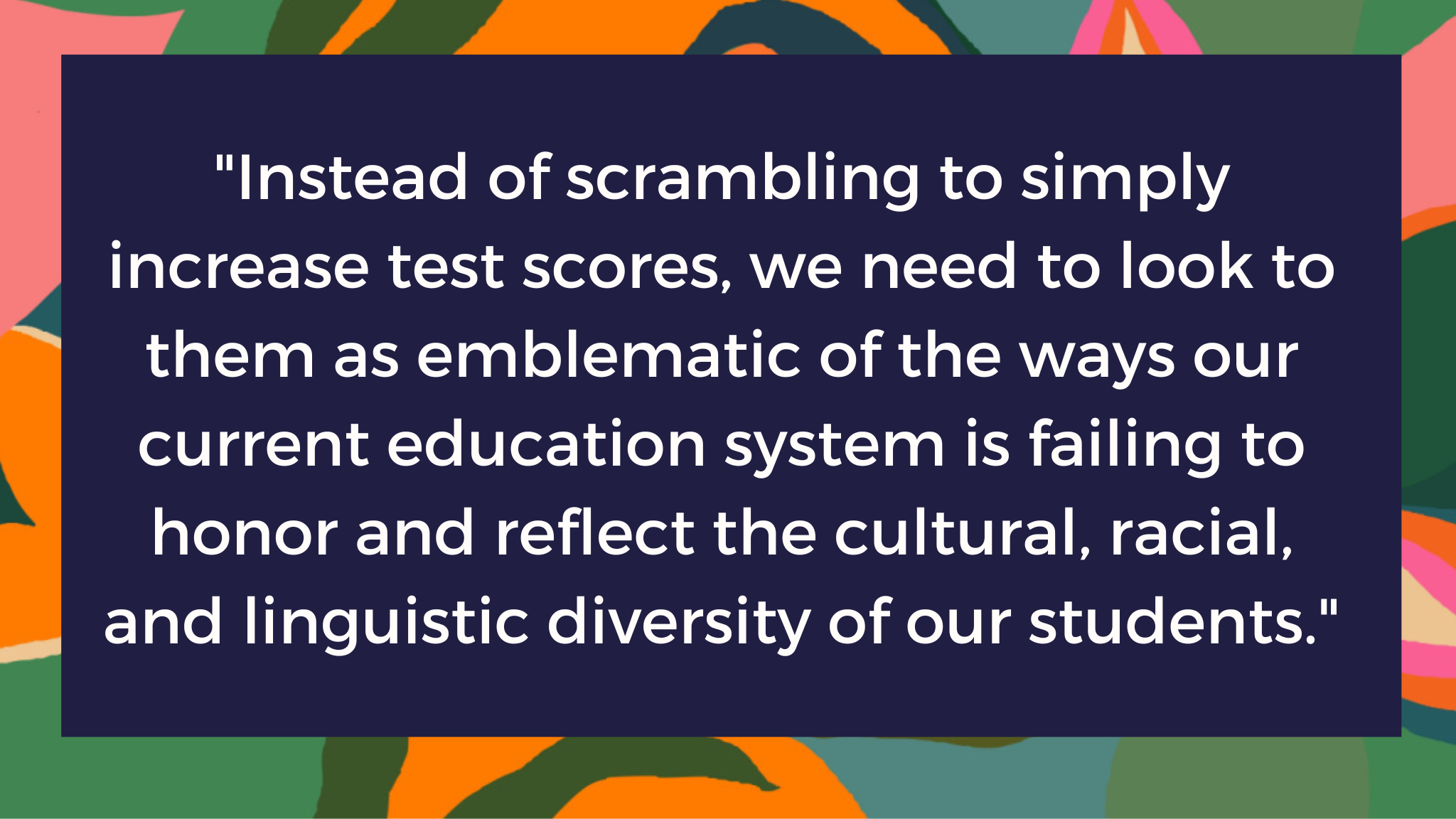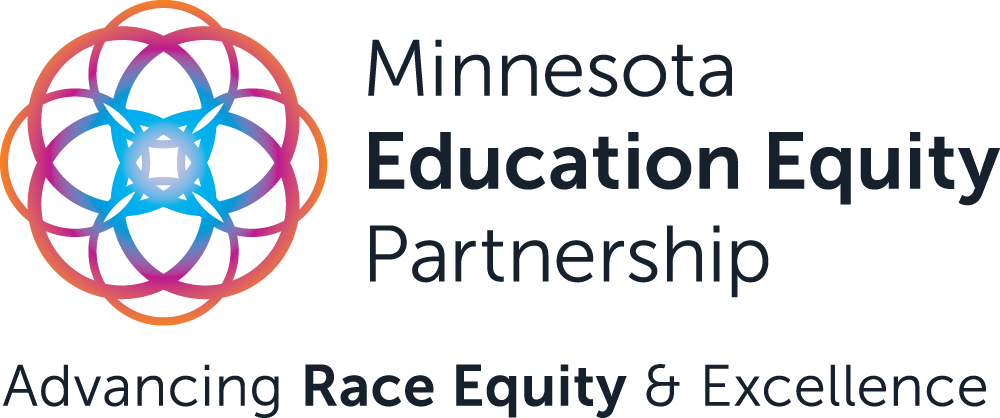
What we really need to be asking about recent student test scores
Last month, the National Assessment of Education Progress released data from the reading and math test scores of 13-year-olds during the 2022-2023 school year. The results were similar to the previous scores released in October 2022, showing a deep decline when compared to “pre-pandemic” scores.
The NAEP has been providing analysis of student test scores since 1971. In 2012, math and reading scores began trending downward, with the biggest dip noted in 2020 and continuing through the 2023 school year.
What this tells us is that while COVID had a major impact on student test scores, it is also true that test scores have been declining for more than 10 years.
What these declining test scores are screaming out to us is that we’ve been ignoring the ways our education system is failing students—especially students who are People of Color and Indigenous (POCI)—for far too long.
Now, more than ever, we have a critical opportunity to redesign the way we define and deliver education to support the goals and needs of all students.
These ongoing slides in test scores—with even more to come soon—are a clarion call to action: Our students want and deserve better.
It’s about the system–not the students
At MnEEP, using a race equity lens to analyze test scores means first and foremost seeing students beyond simply metrics and standardized test scores. It means seeing and valuing students as their whole selves and the rich histories, experiences, cultures, and languages they bring to the classroom.
This is why using a race equity lens is critical for not only analyzing the test scores but also for informing and shaping what we do next to ensure each student’s success.
Here are some critical questions/reflections we need to begin asking about our education system and how we can work to build one that advances racial equity and excellence for each student:
1. What does it look like when we stop educating students for standardized test scores and instead focus on educating students for positive outcomes?
When the 2022 test scores were released, MnEEP’s Research Director Dr. Rev Hillstrom asked the important question in a blog post: “What if instead of historically white-dominant standards applied to education the entire purpose of education focused on equipping individuals with (Knowledge + Skills) so that they could transform themselves as learners?”
“Historically, much of the pedagogical process has been connected to the mechanical narrative of content that required memorization, not self-actualization,” Dr. Hillsrtrom wrote.
“Educating students has often been an act of depositing a dominant identity rather than personal enlightenment. Students historically have been viewed as the depositors while teachers were the systemic banking agents required to complete the transaction of dominant cultural values and information.”
Right now, we have an essential duty: We must act with urgency to redesign an education system that meets the needs of today’s students, who nationwide, are majority students of color and Indigenous.
Our curriculum, teaching, and education environments—designed to center whiteness—must be fundamentally redesigned to reflect today’s diverse students.
2. How can we design an education system that serves today’s students?
Nationwide, POCI students are the majority of K-12 public school students. In Minnesota, nearly 40 percent of students are POCI. Yet our education system is still rooted in white-dominant narratives, design, and standardized test scores.
All too often, we look at test scores as a reflection of students, and not a reflection of the system.
One of the many ways this plays out is the ways whiteness in education views many students of color and Indigenous students as coming to the classroom with a “deficit” instead of as an asset to a multicultural classroom.
The diversity in knowledge, culture, language, and experience POCI students bring to every classroom is critical to the success of all students in a global, multiracial world.
Yet the focus on standardized test scores as a reflection of students and not the ways our education system is failing them is another way this “deficit mindset” plays out.
The data is clear that the traditional ways of educating students are not producing the results we want for kids, including white students.
We need to ask: What do these test scores tell us about the ways our education system must be redesigned to reflect and honor today’s diverse students?
Instead of scrambling to simply increase test scores, we need to look to them as emblematic of the ways our current education system is failing to honor and reflect the cultural, racial, and linguistic diversity of our students.
We need to look to the unique assets POCI students bring to the classroom in designing and shaping an education system, including the development of standardized tests and other achievement measures, that support rich learning experiences and outcomes for each student.
3. What do today’s students want and need to be successful?
This is a critical question we need to ask ourselves about all systems, but especially our education system. In education, so much focus is on the system actors designing the system—often white teachers and administrators—instead of the system “beneficiaries” shaping how the system functions.
Our education system has been designed to put rigid standards and goals onto students, versus centering first and foremost what we can learn from students about how an education system can support them in achieving their full potential.
We wouldn’t try to treat, say, Dutch elm disease wreaking environmental havoc by simply painting the leaves green to make them look the way we want. We look at what the tree is telling us, about the ways our climate and our actions are impacting the ecosystem, and work to alter our actions and behaviors by listening to the trees.
This “listening to the trees” must be the same way we approach this threat to the success of our students: We must look at our actions, beliefs, and behaviors—the biggest threat to our climate, for example–and shift them to respond to what our students are telling us about what they want and need to thrive.
Educators must ask:
- What are our relationships with our students?
- How do our education environments, instruction, culture, and curriculum reflect and support our students?
- What unique skills and assets does each student bring to the classroom?
- How do we look at and define student “achievement” and how do we measure progress?
- How can we support each student’s human purpose?
Policymakers must ask:
- What sorts of holistic student supports do today’s students want or need, and how can we build policies that reflect them?
- How are we defining, supporting, and strengthening racial equity through education policy agendas?
- How are social and cultural identities being supported and uplifted in both practice and school environments through this policy agenda?
- What do “positive” impacts/outcomes mean for POCI students, and how can we shape policy based on what they are telling us?
- What are the positive impacts/outcomes for the educators/institutions: What do educators need–training, support, knowledge–to support these policies and ensure student success?
When we look at what the standardized test scores tell us about the system–and the actors creating the system–we can start to understand what today’s students need.
We can equip educators with the tools they need to fulfill their vocation to honor POCI students and support each student in becoming their full, authentic selves. And we can dismantle an education system that wasn’t designed for today’s students and build one rooted in healing, joy, and opportunity each student deserves.

